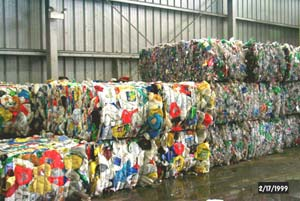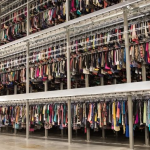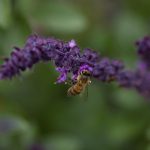Plastics, Not All Created Equally
Author: Emily Wu
In light of China’s waste import ban in 2018, recycling in the US was forced to a rude awakening. Many communities across the US were forced to close their recycling facilities, while others limited the types of waste that they could accept. This is because while recyclable waste is sent to facilities to be sorted, few facilities in the US can actually turn the waste into usable material. Recycling is expensive. In fact, it is sometimes cheaper to make goods using virgin materials instead of recycled materials. In the early 90s, China saw a way to capitalize on its cheap labor and began buying recycled materials. Ever since, the US has exported 70% of all of its plastic waste to China. However, after China implemented their “National Sword” policy, banning the importation of most foreign wastes, the US was forced to confront the amount of waste produced on a daily basis. With no market to sell their amassed waste to, many recycling centers were forced to send their waste to the landfill or burned. This drastic change is especially prevalent in one of the biggest issues in recycling: plastics. Thankfully, Montgomery County’s plastics are sold to domestic vendors, so the Chinese import ban has had little effect on the types of plastics that Montgomery County Recycling accepts.
Plastics are present throughout our daily lives, whether it’s plastics in packaging, utensils, or even clothing. But how much do you really know about plastic recycling? Most people just throw all their plastics in the recycling bin without actually knowing if they can be recycled or not. So why does this matter? A lack of knowledge on what can and cannot be recycled is one of the biggest contributors to contamination in the recycling process. Montgomery County Recycling Center uses a mix of machine and manual sorting to both pick out contaminants and sort the plastics, metals, and glass from each other to be packaged into bales that can be sold to vendors. However, contaminants can still fall through the cracks. Certain contaminants can render an entire batch of recycled materials worthless, and the batch thrown out. Sometimes, they can even stall the sorting process. Even something as small as a plastic bag can halt the entire process when caught in a machine. In addition, too many contaminants sent to the sorting facility requires more time and resources to sort the nonrecyclable materials from the recyclable, which slows down the recycling process.
 (Image from Montgomery County Department of Environmental Protection)
(Image from Montgomery County Department of Environmental Protection)
The truth is, not all plastics are created equally. In 1988, The Society of Plastics Industry established a 7 group classification system that allows consumers and recyclers to determine the type of plastic in a product. Plastic products are often marked with a number known as a Resin Identification Code (RIC) during manufacturing to identify the type of plastic the product is made of. Theoretically, every single one of these plastic types can be recycled. However, different types may be more difficult and expensive to do so. Some of the most commonly recycled plastics are type 1, which is usually found in the form of bottles and clothing, and type 2, which makes up milk jugs. Meanwhile, other types of plastics are only sometimes recycled either due to a difficult recycling process or contamination problems. These plastics include type 3, used in piping, type 4, used in sandwich bags, plastic wrap, and plastic bags, type 5, often used in prescription bottles, and type 6 plastics, typically found in the form of styrofoam in disposable coffee cups and food containers. Lastly, type 7 plastics refers to any other type of plastics outside of the other 6, such as mixed plastic products. As this group is extremely variable, these plastics are difficult to recycle. Montgomery County Recycling Center accepts 6 out of the 7 types of plastics: 1, 2, 3, 4, 5, and 7. Type 6 plastics are not accepted for recycling.
So what now? There are a few things that we can do to help with the recycling process. The first is to be aware of what Montgomery County accepts to be recycled, found on Montgomery County’s Department of Environmental Protection website. Knowing the types of materials that can and cannot be recycled will help make the process of sorting wastes much smoother, and decrease the chances of actual recyclables going to the landfill. However, the best solution is to stop using single use plastics altogether. Decreasing our output of plastic waste decreases the chance of plastics going to landfills or washed into the environment. Even something as simple as reusing plastic bags or choosing not to use disposable plastic water bottles can have a great impact in the long run. Plastic, once created, stays in the environment forever, and it is our responsibility as consumers to limit how much of it we use.
Emily Wu is a Senior at Walt Whitman High School.
Emily interested in many environmental issues, mainly how global warming and pollution impacts the organisms in our ecosystems and environments, as well as how the global changes are affecting life for humans.
References
(n.d.). Retrieved from https://montgomerycountymd.gov/SWS/recycling/china-waste-import-restrictions.html
Bloch, M. (2018, October 27). Recycling plastics – what the numbers mean cheat sheet. Retrieved from https://www.greenlivingtips.com/articles/recycling-by-the-numbers.html
Cheryl Katz • March 7, Cheryl Katz, Cheryl Katz, •, Cheryl Katz is an independent science writer covering climate change, Katz →, M. A., . . . Oldham, J. (n.d.). Piling Up: How China’s Ban on Importing Waste Has Stalled Global Recycling. Retrieved from https://e360.yale.edu/features/piling-up-how-chinas-ban-on-importing-waste-has-stalled-global-recycling
Edited by Adam Redling and DeAnne Toto. (2018, April 19). China announces import ban on an additional 32 scrap materials. Retrieved from https://www.recyclingtoday.com/article/china-bans-solid-waste-imports/
How the Recycling Center works. (n.d.). Retrieved from https://www.montgomerycountymd.gov/SWS/facilities/rc/how.html
How to recycle / dispose plastic bottles, containers, tubs, and lids. (n.d.). Retrieved from https://www2.montgomerycountymd.gov/DepHowDoI/material.aspx?tag=plastics&material_key=64
Lieber, C. (2019, March 18). Hundreds of US cities are killing or scaling back their recycling programs. Retrieved from https://www.vox.com/the-goods/2019/3/18/18271470/us-cities-stop-recycling-china-ban-on-recycles
Staff, R. T. (2017, November 16). China releases new proposed contaminants thresholds. Retrieved from https://www.recyclingtoday.com/article/china-proposes-contaminants-thresholds/
shopplaywood. Vector plastic recycling. Plastic resin codes icons. Garbage waste sorting recycling icons. Reduce reuse recycle. Plastic bottles and other plastic materials [JPEG]. Shutterstock. https://www.shutterstock.com/image-vector/vector-plastic-recycling-resin-codes-icons-1514549114
What is Recycling Contamination, and Why Does it Matter? (2020, August 21). Retrieved from https://www.rubicon.com/blog/recycling-contamination/






